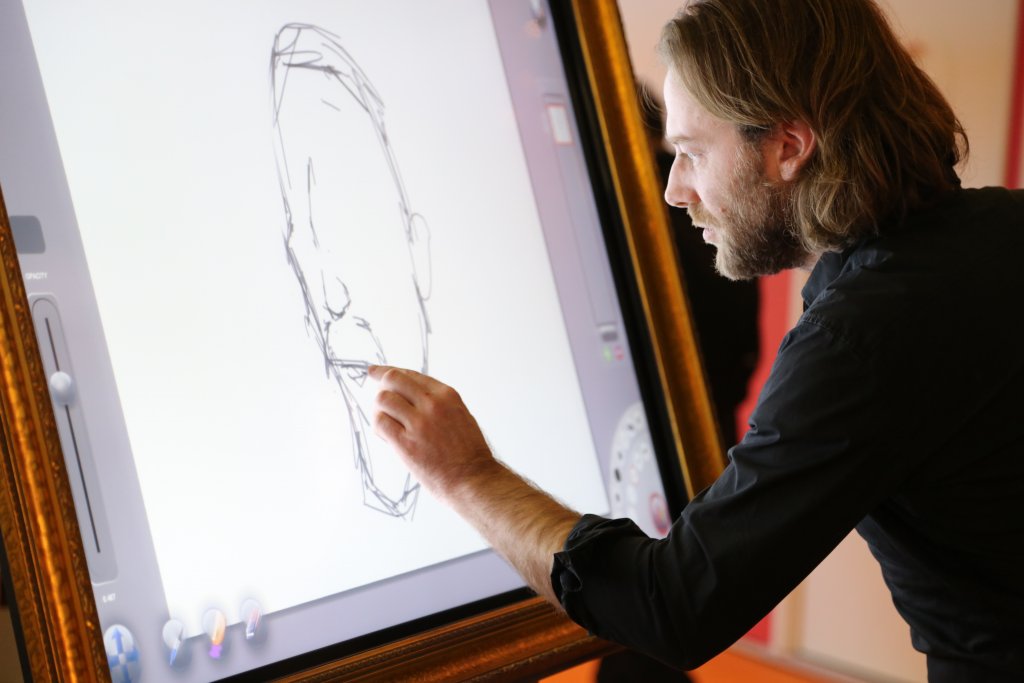
More schools are choosing to adopt digital displays equipped with touch technologies in their buildings and classrooms. From large, touch-enhanced wayfinding displays to learning displays and interactive whiteboards, the number of educational technology products available to schools is staggering. But you undoubtedly face many challenges when it comes to deciding what products will work best for your visitors, teachers, and students, especially when trying to get the best return on investment.
There are many questions to consider: Is the technology reliable and easy to use? Does it work with existing technologies? Does it come with high implementation costs?
While these questions may seem like barriers, if you can leverage cost-effective interactive screens that help them create more useful facilities and engaging classrooms—that bring information and subjects to life with stunning graphics and interactive elements, that facilitate visual engagement and hands-on learning—you have the opportunity to greatly enhance the learning experience, while minimizing costs, yielding room to invest in other critical aspects of your school.
- Global spending in the education sector on technology is projected to reach $19 billion by 2018.
- Interactive flat panel displays are the “standard” in classrooms worldwide and are enjoying a 20% classroom penetration rate.
Here we examine 3 important interactive screen use trends that will impact the education sector in 2015.
Interactive Wayfinding
Helping students and visitors quickly find where they are in relation to buildings on campus is important. In the past, schools relied on confusing print signage and building directories that were often difficult for students and visitors to locate, and they frequently did not provide the most accurate or up-to-date information. That is why more schools have begun adopting digital displays to help students and visitors quickly find where they are and where they want to go while giving them easy access to more in-depth information about the campus.
With the prevalence of screens and digital wayfinding technology in other venues, you can rest assured that digital displays provide students and visitors with an experience that matches their expectations.
- In the U.S. 70% of people over 12 are viewing digital displays every month.
- According to a recent study, 96% of students notice digital signage immediately.
Now, it is important to understand that many wayfinding technologies rely on displays that offer only limited functionality and capabilities, and oftentimes provide few ways for visitors and students to interact with content. This is because wayfinding displays often have problems outdoors with clarity and those that do have touch capabilities often cannot respond to multiple touch inputs, which significantly limits where they can be deployed effectively.
However, perimeter-based touch screen technologies are overcoming these issues by offering schools a way to build wayfinding displays both indoors and outdoors, enabling students and visitors to view interactive campus maps along with other media content. With interactive wayfinding displays that utilize perimeter-based touch technology, it is easier for your students and visitors to get information and directions in a manner which is intuitive.
Touch Learning Displays
Getting more students involved in learning is one of the main goals for schools adopting new technologies for the classroom. And the types of technology that students respond to most are closely related to what they are already using in their daily lives. Think high-definition displays and touch-enabled devices such as tablets and mobile phones. Increasingly, schools are realizing that adopting products enhanced with touch technology is what helps students and teachers collaborate and learn more effectively, and many studies indicate that this notion is correct.
- 62% of students say that technology helps them feel better prepared for class.
- 77% of students say adaptive technology has helped them improve their grades.
Touch displays have been around for a long time, and you probably know that many older displays were not only hard to use but required significant resources for schools to implement and keep functioning. As educators seek to facilitate an active learning environment that focuses on engaging various learning styles, group work and presentations, you will need touch displays that are intuitive to use, able to withstand intense classroom use, and that seamlessly integrate with other classroom technologies.
With ShadowSense™ technologies, you can leverage touch displays that work with any operating system, utilize simple USB HID connectivity, and have the ability to discriminate touch inputs from objects resting on the display surface as well as other debris.
Better Digital Whiteboards
Digital whiteboard technology has become a ubiquitous part of classrooms around the world. With their ability to integrate various types of media content with interactive applications, they still offer schools a great way to make the most out of their classroom space, while providing better learning opportunities for students.
According to Futuresource, whiteboards are positioned at the front of 45% of US and 90% of UK classrooms. Interactive whiteboards are associated with higher levels of achievement and have been shown to provide gains of nearly 20%.
In the past, digital whiteboards have been complicated devices that often relied on bulky hardware, hard-to-understand software, and native applications to display interactive content in the classroom. What this led to was more teacher frustration and less benefit for the students. If teachers cannot make use of the digital whiteboard technology you are offering without hours of training, schools are going to be reluctant to get rid of the existing legacy technology that is already in place.
ShadowSense technology is reducing whiteboard costs and seamlessly integrates with existing technologies, turning any display into a fully functional digital whiteboard. Instead of requiring training sessions to learn how to operate, teachers and students can jump right in and use objects or their hands to trigger the touch surface, which can stand up to 200,000 hours of use even in tough classroom environments.
Interactive screens are helping change how schools deliver information and provide collaborative learning experiences that will allow them to shape educators and students for future success. Where do you see touch screen technology making a difference in your learning institution?